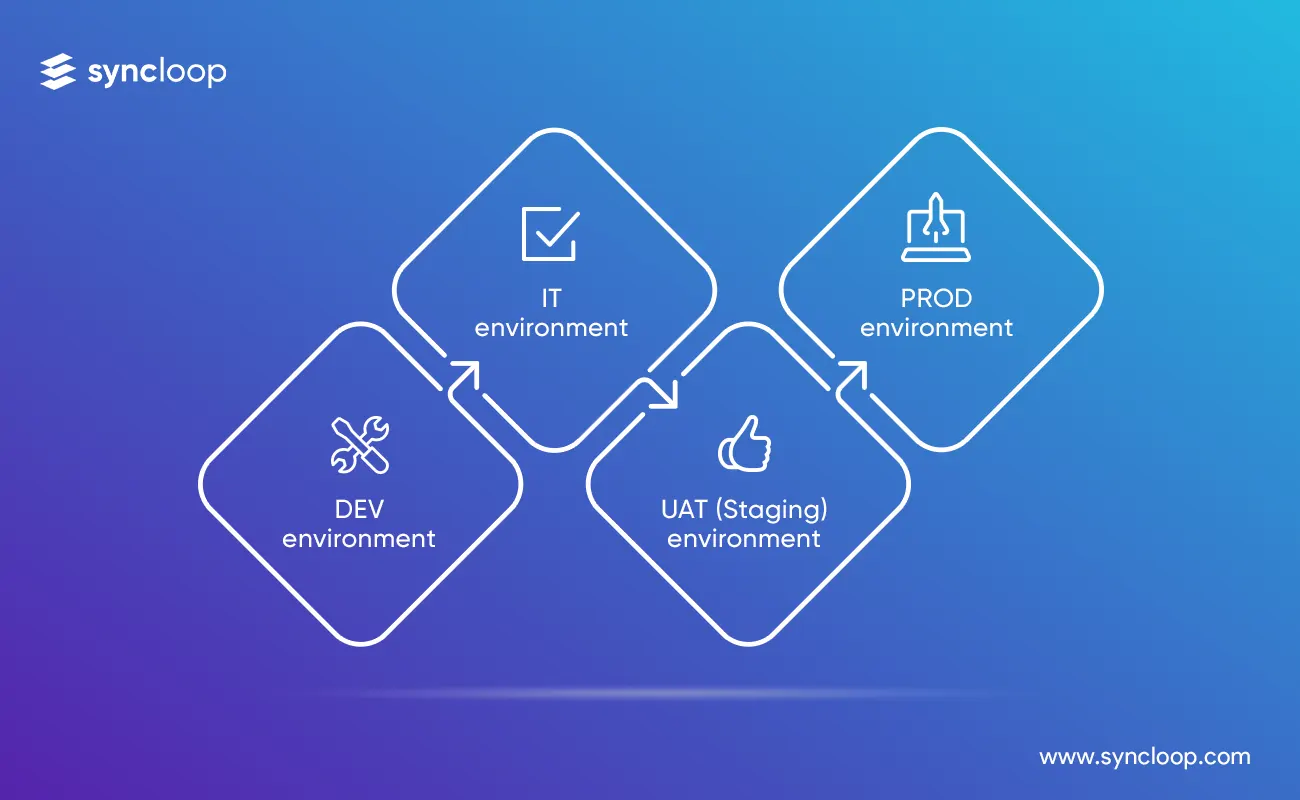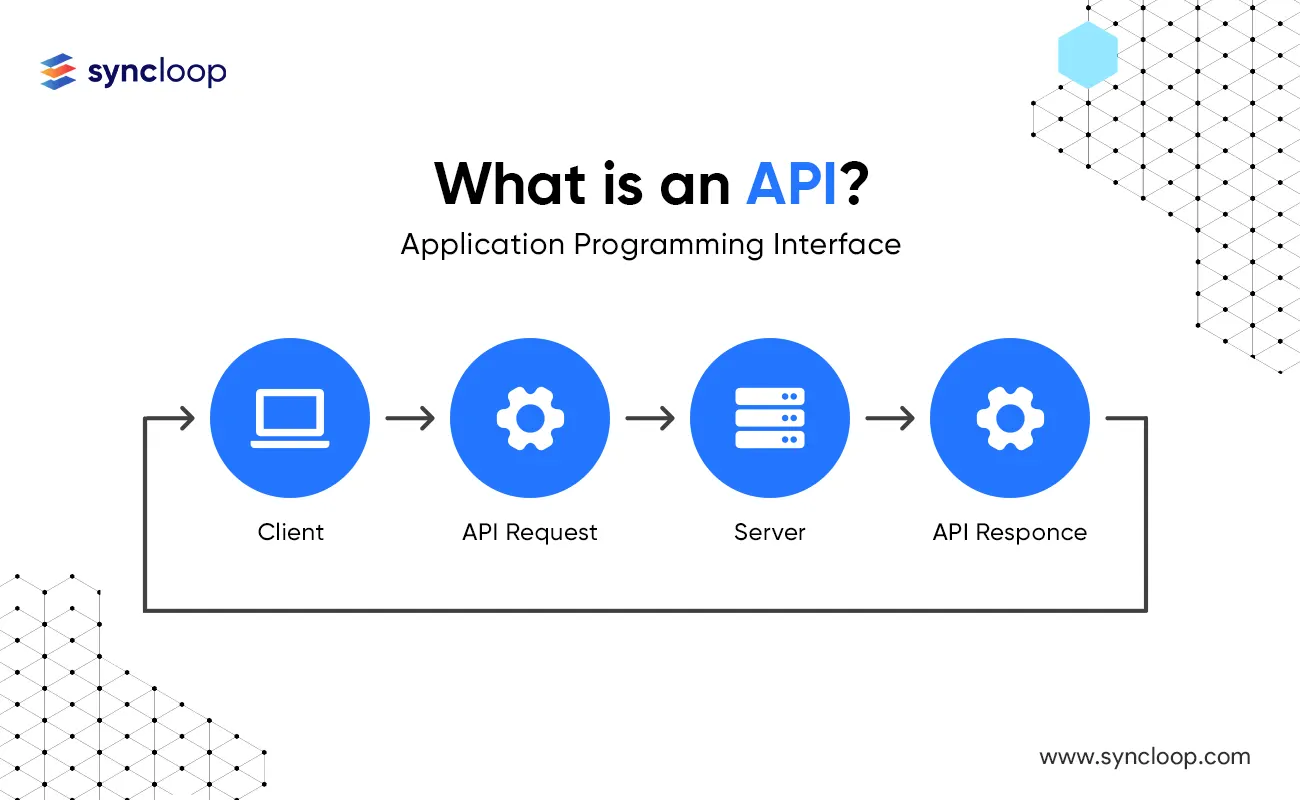API development lifecycle on Syncloop
Posted by: Muheet | January 26, 2024

Categories: API development, Deploy APIs, API
Syncloop is the world's fastest API Development Platform providing a visual experience to build, integrate, and deploy APIs and making them go live in seconds. It is a complete middleware platform that enables core, composite, or aggregation APIs, business workflows, and 3rd party integrations. At Syncloop, dedicated developers, Architects, and Tech Leaders plan and create APIs on a start-up-friendly and enterprise-ready API development platform. It provides a high-quality, fast, comprehensive API development, management & deployment platform to enable organizations to be more agile. The development life cycle on the Syncloop platform manifests four environments for any API project which include DEV (Developer), IT (Integrated Testing), UAT (User Acceptance Testing), and PROD (Production).
1. DEV environment
The Syncloop development environment is the collection of processes and tools that are required to write, build, test, and debug APIs. The development environment offers a controlled space where the developers can start designing, prototyping, and shaping the APIs to be developed. In this process, the entire DEV environment provides various services that automate the building process of these APIs. The various groups that are created in the Syncloop DEV environment include environment:
a) Developers
b) Administrators
Developers have access to this environment and all the developers share the space with all the services getting created in a collaborative space. Each developer working in the environment can view all the services assigned to the "developers" group but only one developer can take control of a service at a time. Developers can take control of a service by acquiring a lock on that service so that the service does not get modified by other developers. These privileges are provided to these developers by administrators. Once a service is created, it is promoted from the "DEV" environment to the "IT" environment. This promotion can be done using the inbuilt promotion management feature of Syncloop.
2. IT environment
Syncloop’s IT environment is usually where final testing is done before APIs are moved to production. It is achieved by executing various test cases for these already created APIs. The IT environment analyses an API to verify it so that it fulfills its expected functionality, security, performance, and reliability. The environment also analyses the business logic as well as the security of the application and data responses. The testing is generally performed by making requests to one or more API endpoints and comparing the response with the expected results. The IT environment analysis the API on the endpoints, and response codes, for successful and unsuccessful requests with necessary error messages. The environment analyses responses on the basis of reply time, data quality, confirmation of authorization, HTTP status codes, and error codes. In this environment, two testing groups are created.
a) Testers
b) Administrators
All the testers are added to the "testers" group. These "testers" have read-only access to these services. The testers don’t possess the necessary privilege to take control or modify any service but rather provide a testing report to the developers which enables them to modify these APIs.
Once a service is tested and certified, it is promoted to UAT (Staging) environment. This promotion can be done using the inbuilt promotion management feature of Syncloop.
3. UAT (Staging) environment
Once the internal testing of the service is completed and is ready for approval, Syncloop enables the team to deploy it on a UAT server. Once in the server, the service will get the final nod from the client before putting it into production. The environment provides a real-time view of how the service will behave in production. The client will be able to check that the features they requested are working according to their original thoughts. If the client does not like their original thought on a feature in UAT, they determine whether they want to launch as-is or change the way something is working. This speeds up approvals and limit problems that might occur after going live. The various groups created in the environment are:
a) Business-Testing-Group (BTG)
b) Operations
c) Administrators
The purpose of this environment is to do end-to-end integration and business testing for all the services. The "Business-testing-group" users have read-only access to all services and are not able to take control or modify any service. Syncloop offers a staging server set with all production configurations and enables the business testing group to perform smoke testing. This ensures that API works in a production configuration and architecture as it is the last step before production. Once business testing is complete, the service can be promoted to the PROD environment. This promotion can be done using the inbuilt promotion management feature in Syncloop.
4. PROD environment
Syncloop’s production environment is where the latest versions of services are pushed live to the intended clients. This is the environment where the end user can see, experience, and interact with the new service. All testing is completed, and all bugs are squashed before this point. Whereas a Syncloop development environment may contain several different versions of a service or update being worked on and tested, a production environment contains just the final version of the service in order to avoid any confusion or security vulnerabilities. The two groups that are created in this environment include:
a) Operations
b) Administrators
This is the final production environment. Only Operations and administrators have access to this group where these administrators define the working privileges for these operators. All the services in this environment can be used by business consumers.
Back to Blogs

